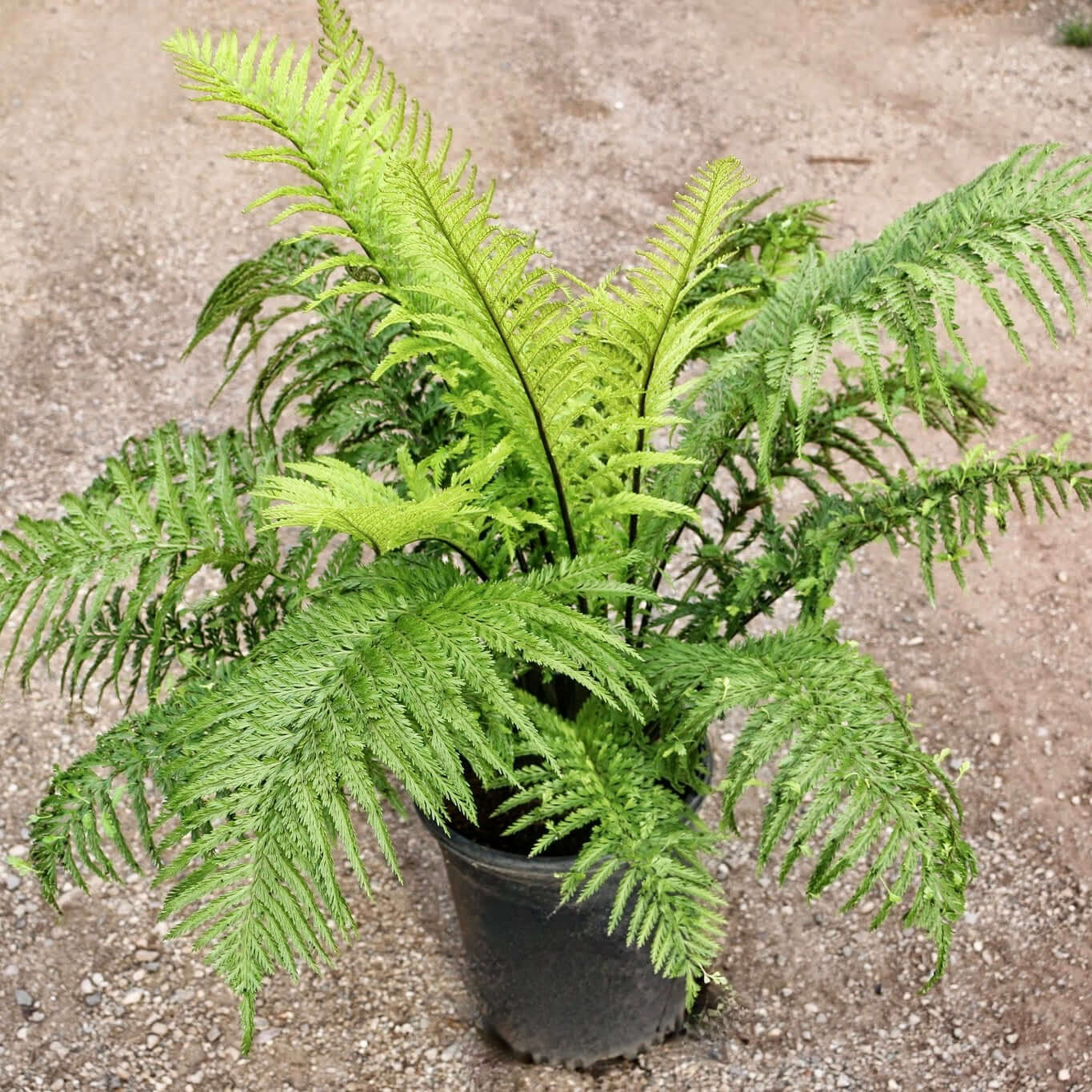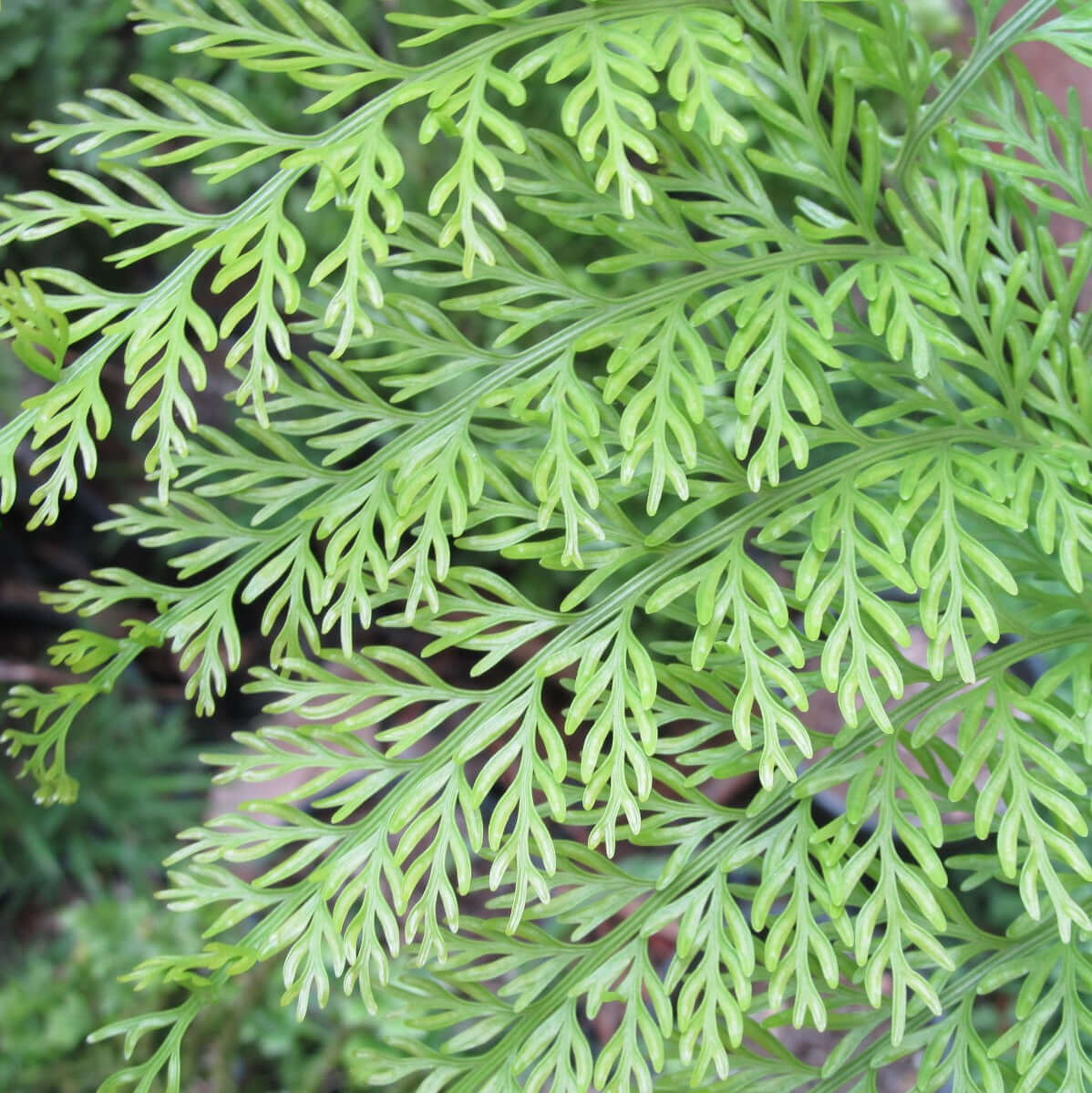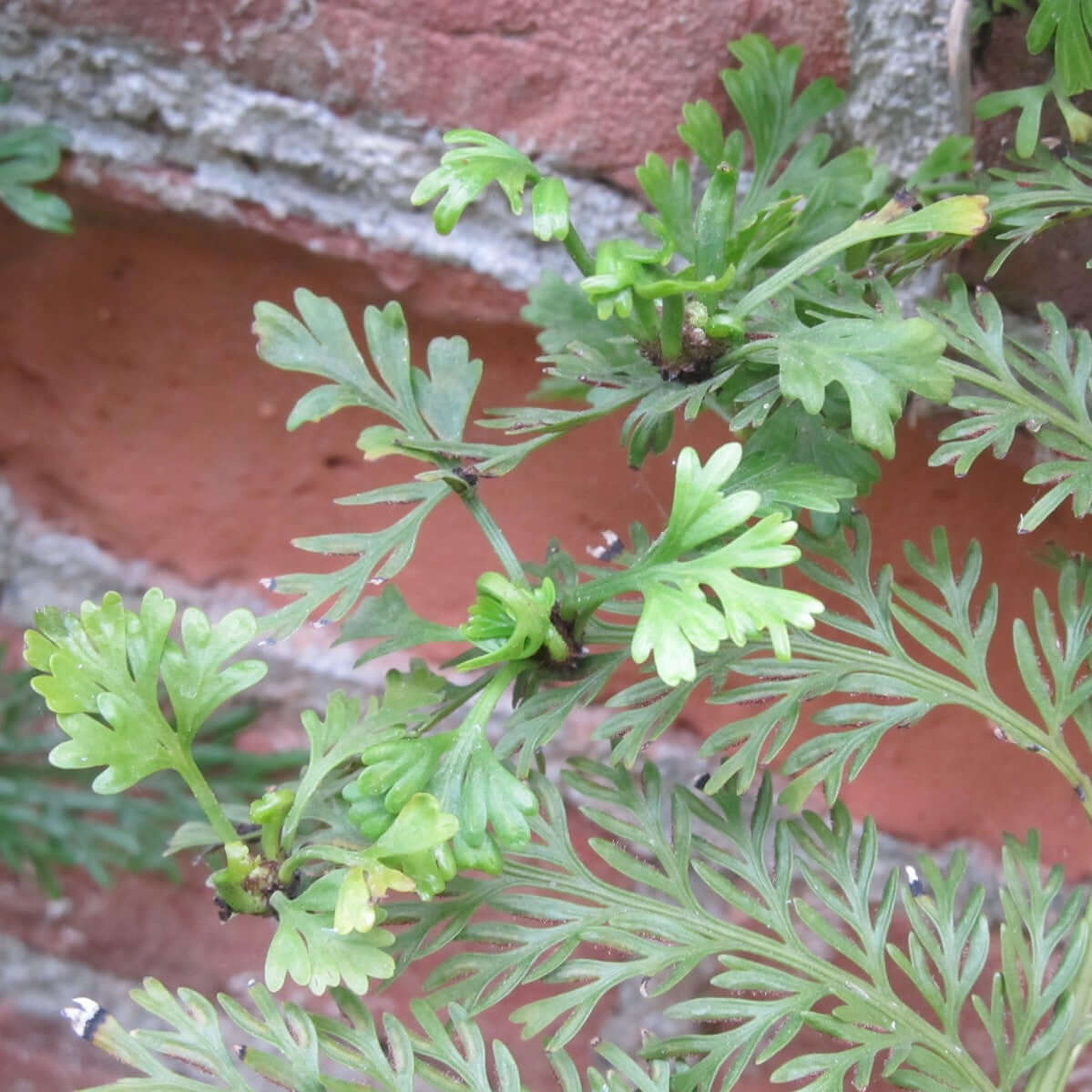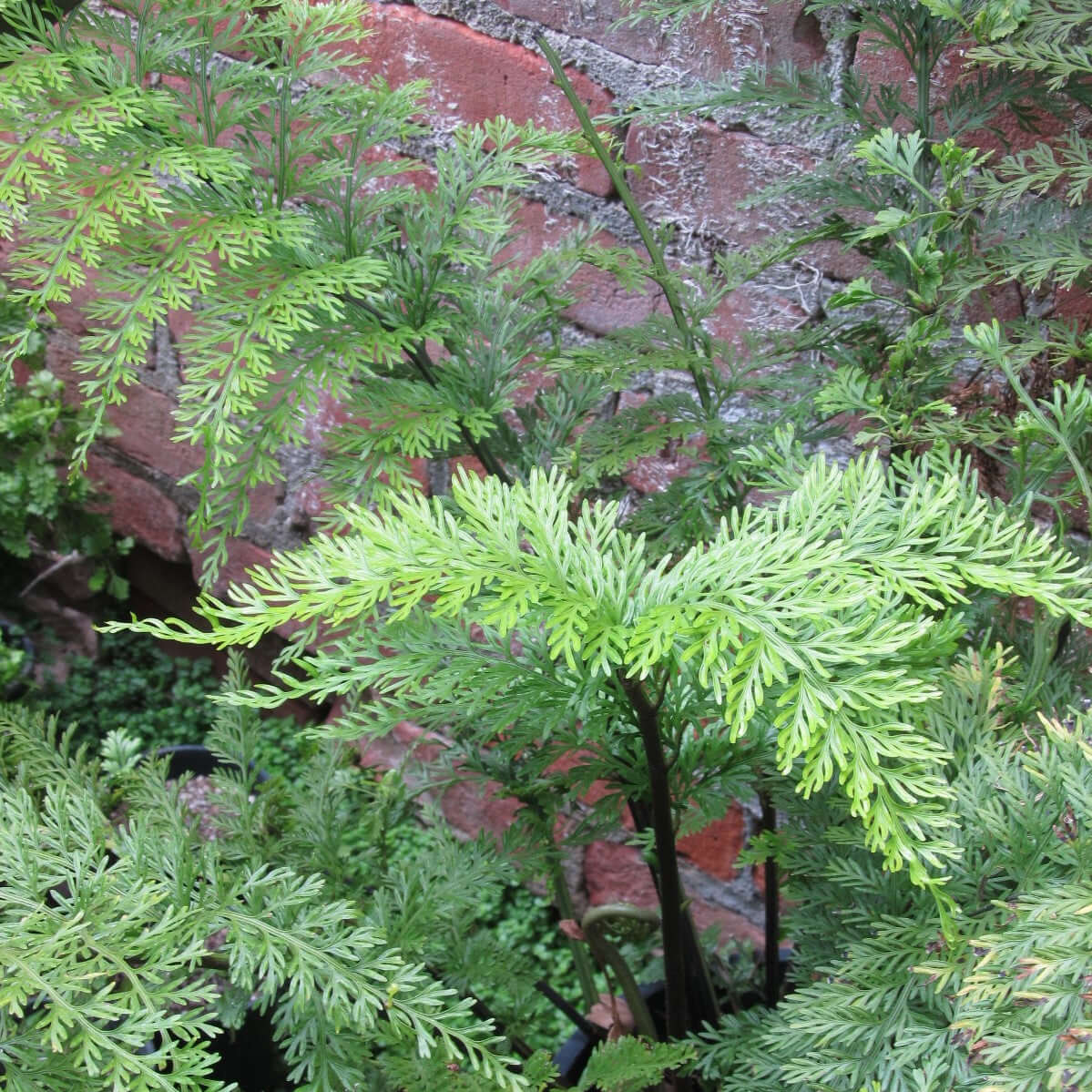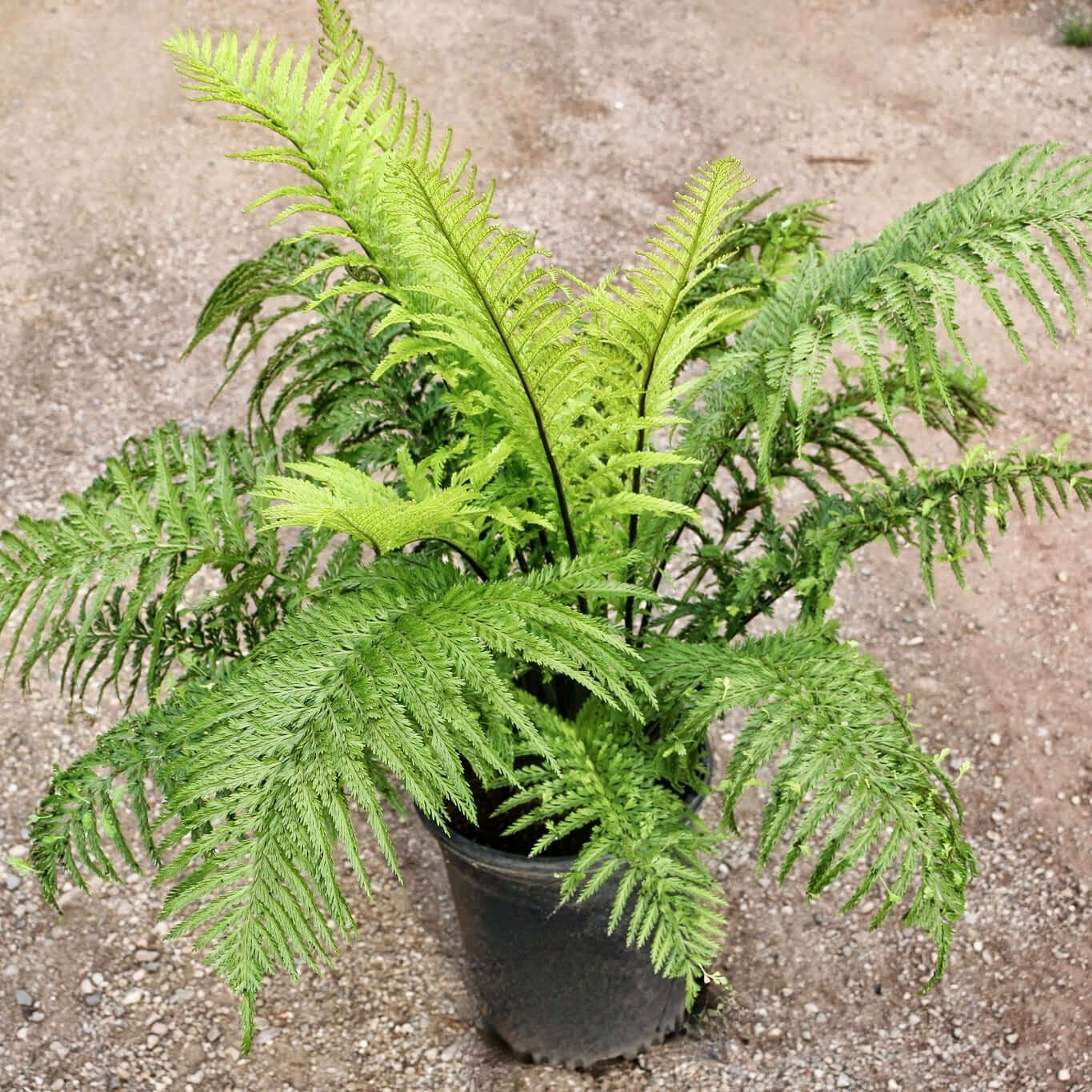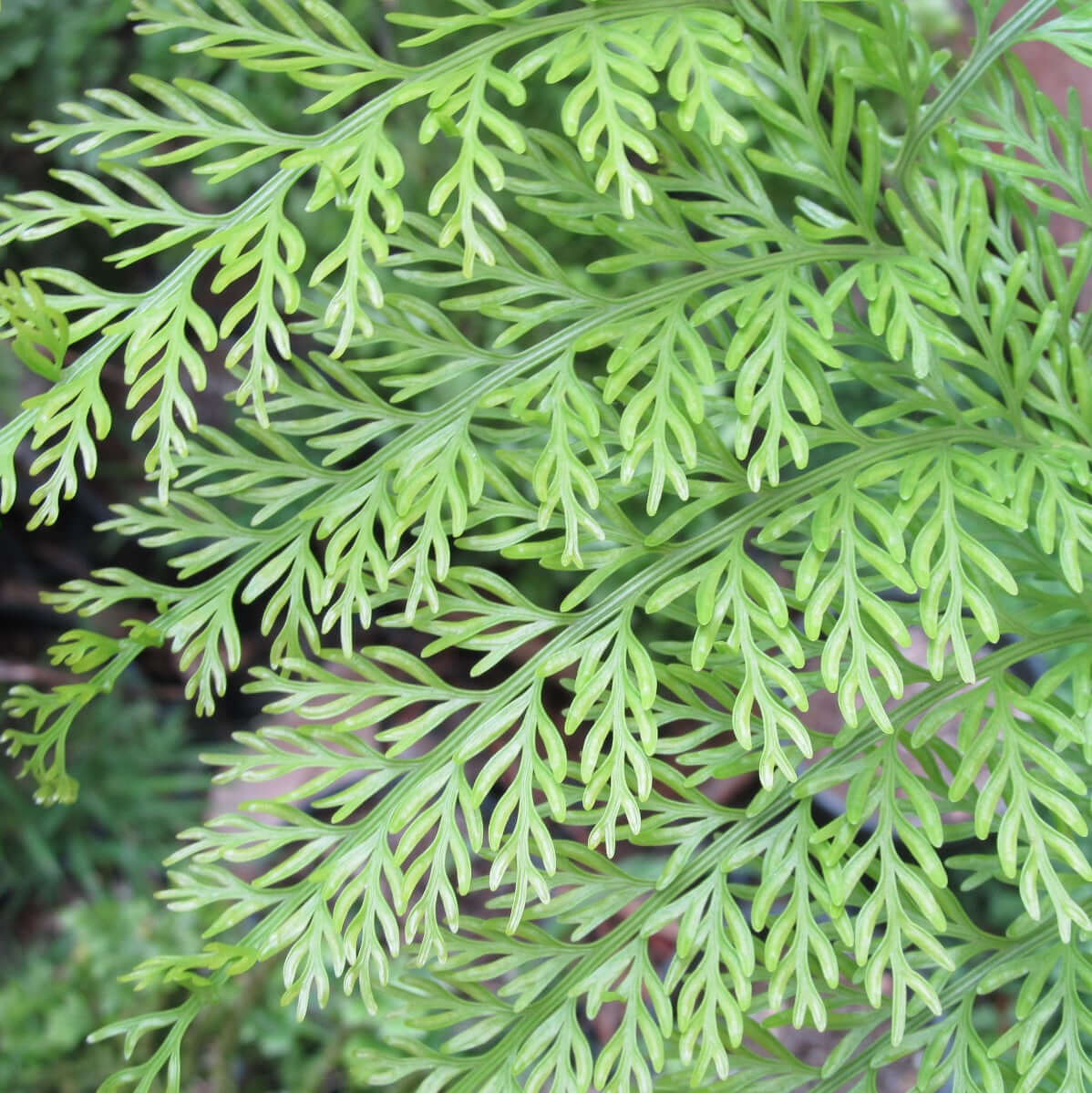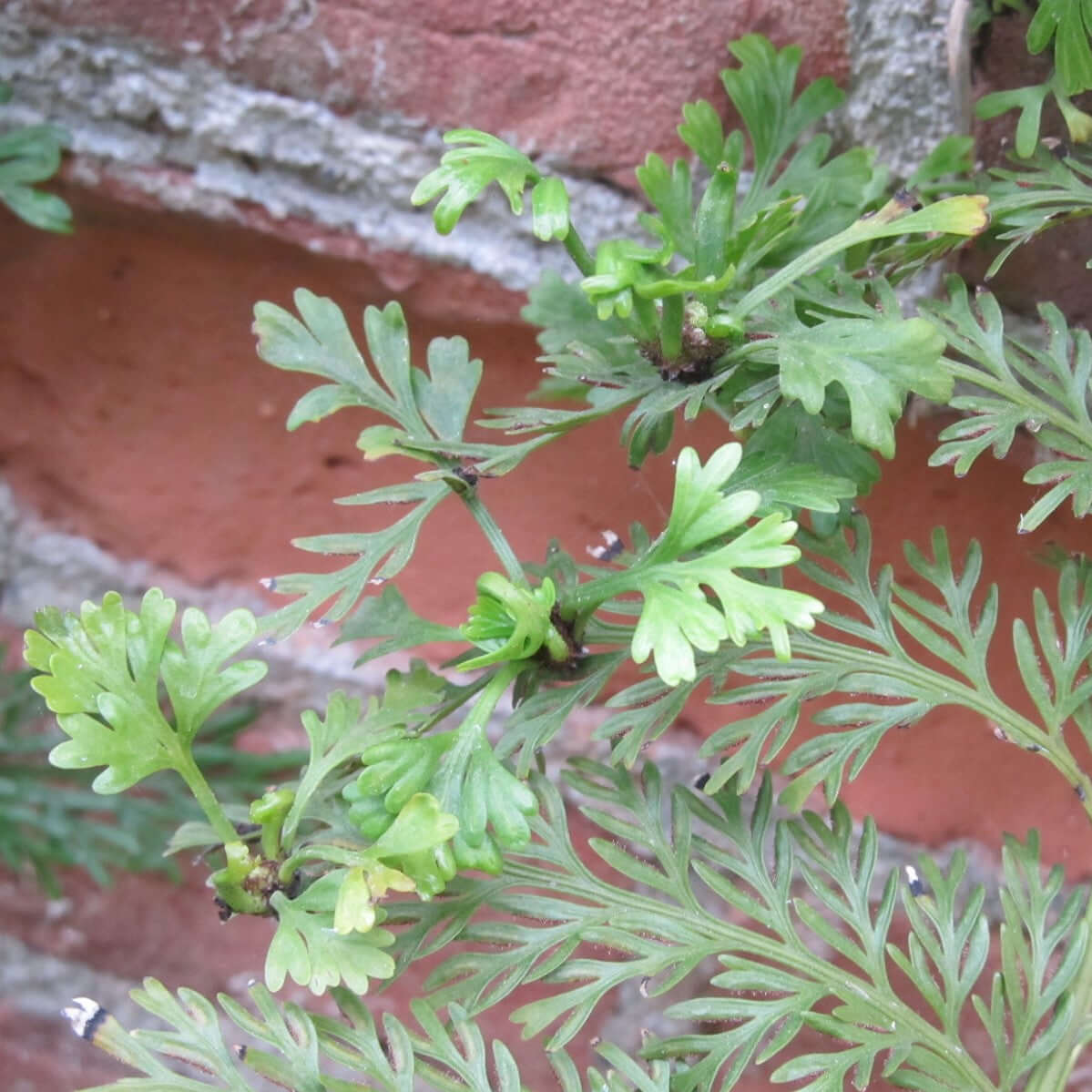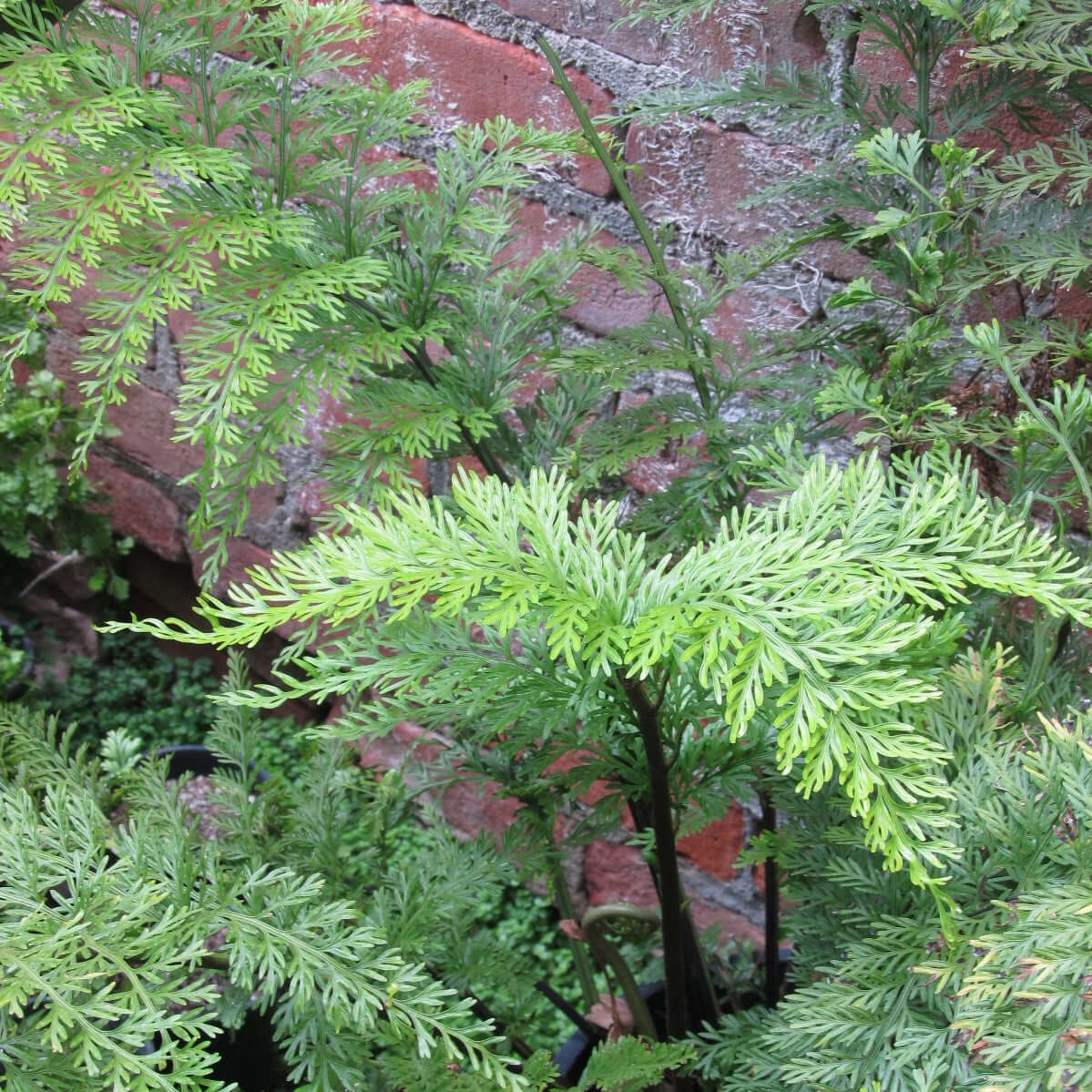Asplenium bulbiferum
*All orders eligible for $20 flat-rate delivery. Go ahead, plant your heart out!
Mother Fern
Mother Fern
Asplenium bulbiferum
Couldn't load pickup availability
Asplenium bulbiferum is a beautiful fern with glossy, pale green, arching foliage prized for its graceful habit and unique ability to produce “baby plants” known as bulbils along its fronds. This unusual characteristic gives Asplenium bulbiferum its common names of Mother Fern, Hen and Chicken Fern, and Mother Spleenwort. Lacy and luxuriant, Mother Fern adds texture and elegance in a shady garden.
Mother Fern is a medium-size fern that spreads 3 ft. wide by short, creeping to suberect rhizomes. This semi-hardy to semi-tender evergreen fern is soft textured with finely cut blades and long fronds that measure 2-3 ft. long. The offspring, or plantlets, produced on the top of the leaf add another dimension of texture. The foliage color can change from light green to yellowish-green in brighter light, adding another exciting element to the landscape.
Asplenium bulbiferum is easy to grow and is an excellent fern for shady areas in the landscape with moist soils. Mother Fern looks great in tropical, meadow, or woodland gardens in mass plantings, as an accent, or in containers. It can also be grown indoors in bright, indirect light.
With its graceful, arching habit, glossy green fronds, and lacy appearance, Asplenium bulbiferum adds texture and interest in a shady landscape. Easy to grow and low maintenance, Mother Fern is a popular choice for California’s mild climate gardens in the central coastal or southern coastal areas.
Asplenium bulbiferum does best in bright shady sites with damp or wet soils and prefers organic rich, acidic soils. Plant in a location protected from sun and wind. Temperature, light intensity, soil moisture, and humidity, all contribute to the stress or success of your fern.
After planting your Mother Fern, water deeply and regularly for several weeks to reduce plant stress and facilitate root development. After roots have become established, reduce frequency and water as needed to maintain even soil moisture. The amount of water required is dependent on several environmental factors such as wind, temperature, soil type, and light intensity. Apply a layer of mulch to help retain soil moisture.
Pruning is not necessary, but any dead or damaged fronds can be removed at the base to improve the plant's appearance.
Asplenium bulbiferum is a semi-hardy fern suited for USDA growing zones 9-11, hardy to 25-30°F. It is an evergreen fern that does not go dormant or lose its leaves. Semi-Hardy Ferns usually tolerate nighttime temperatures above 40℉ during the cool season and can survive short periods of freezing temperatures if not too severe. Semi-hardy ferns grow well in the inland valleys along warmer coastal regions.
If the conditions are right, the plantlets (bulbils) that fall from the fronds to the soil may develop roots and grow into a new fern.
Flat Rate
All orders have a flat rate delivery fee of $20.
Quality
Delivering premium quality plants is a core value for everyone at Plants Express. Whether it is a small plant or a large tree, we use the appropriate vehicles and team members to deliver your order in a timely manner.
Our Commitment:
As part of our unwavering dedication to sustainability, we take great pride in delivering your plants and trees without the use of any cardboard boxes. Furthermore, we utilize our own fleet of eco-friendly vans to ensure that we uphold our commitment to sustainable practices throughout every stage of the delivery process.
Our commitment to your satisfaction goes beyond just reducing waste and emissions, as we guarantee that your products are in the capable hands of our expert team members. With their careful attention and exceptional skills, your plants and trees will arrive in immaculate condition, ready to thrive in your care.

Q: Why is Asplenium bulbiferum commonly called Mother Fern or Hen and Chicken Fern
A: Asplenium bulbiferum produces offspring, known as bulbils, on top of its leaves. The “baby ferns” fall to the ground and may develop roots and become a new fern if the growing conditions are suited for growth, which is why this fern is commonly called Mother Fern or Hen and Chicken Fern
Q: What is a semi-hardy fern?
A: From the Fern Grower’s Manual, Revised and Expanded Edition, by Barbara Joe Hoshizaki and Robbin C. Moran, Timber Press, 2001, Ferns are classified into four groups: hardy, semi-hardy, semi-tender, or tender. This classification refers to a range of the coolest temperatures a fern can tolerate. While many ferns can endure short periods of lower temperatures, or may fall on the border in between these categories, this classification identifies a general temperature preference for a specific fern. “A semi-hardy fern usually tolerates nighttime temperatures above 40℉ but can survive periods of freezing temperatures if short and not too severe.”
Q: Are the brown spots on the underside of my fern leaf insect eggs?
A: The brown spots on the underside of the fern leaf are spores which is how ferns reproduce, they are not insect eggs. Sporangia is a specialized structure that holds the spores and develops in clusters called sori which may appear as black dots, lines, or rusty patches and arranged in symmetrical or scattered patterns, or completely cover the lower leaf surface.
Q: What is the rusty dust on my fern leaf?
A: Ferns reproduce by spores. Sporangia is a specialized structure that holds the spores and develops in clusters called sori which may appear as rusty patches, black dots, or lines and arranged in symmetrical or scattered patterns, or completely cover the lower leaf surface. The rusty dust on the fern leaf are spores, part of the fern’s life cycle.
-
At Plants Express, we specialize in delivering the highest quality plants grown specifically for California's unique climate and conditions.
-
Our plants are hand-selected by our team of experts to ensure that only the best plants are procured for our customers.
-
We monitor each plant from the moment it's selected until the moment it arrives at your location to ensure that it arrives in the best possible condition.
For over 20 years, we’ve provided the finest plants and trees for California’s beautiful homes and landscapes. With more than 10 million trees and shrubs delivered and in the ground, we are California’s premier online nursery. We inspect every item for adherence to our stringent quality standards. From there, your plants are carefully loaded into our specially outfitted sprinter vans. If you need more mature trees and shrubs, we have a fleet of trucks for large deliveries. No more chasing after plants and carting them home. No more dried out or damaged plants arriving in boxes. With Plants Express, you can get everything you need in just a few clicks, from the comfort of your home.
Do you need help?
Our friendly plant experts are here to help. Give us a call or chat with us now.
